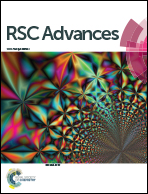Nano copper(i) oxide/zinc oxide catalyzed N-arylation of nitrogen-containing heterocycles with aryl halides and arylboronic acids in air
Abstract
The synergistic effect of zinc and copper in Cu2O/ZnO nanoflake as a heterogeneous catalyst for the N-arylation of heterocycles with aryl halides and arylboronic acids in the absence of additional ligand in air were demonstrated. The catalyst was characterized by powder X-ray diffraction (XRD), scanning electron microscopy (SEM), transmission electron microscopy (TEM), BET surface area measurement, and FT-IR spectroscopy.


 Please wait while we load your content...
Please wait while we load your content...